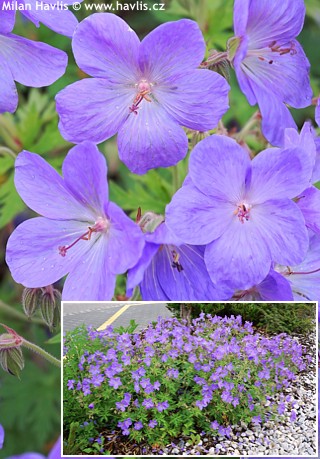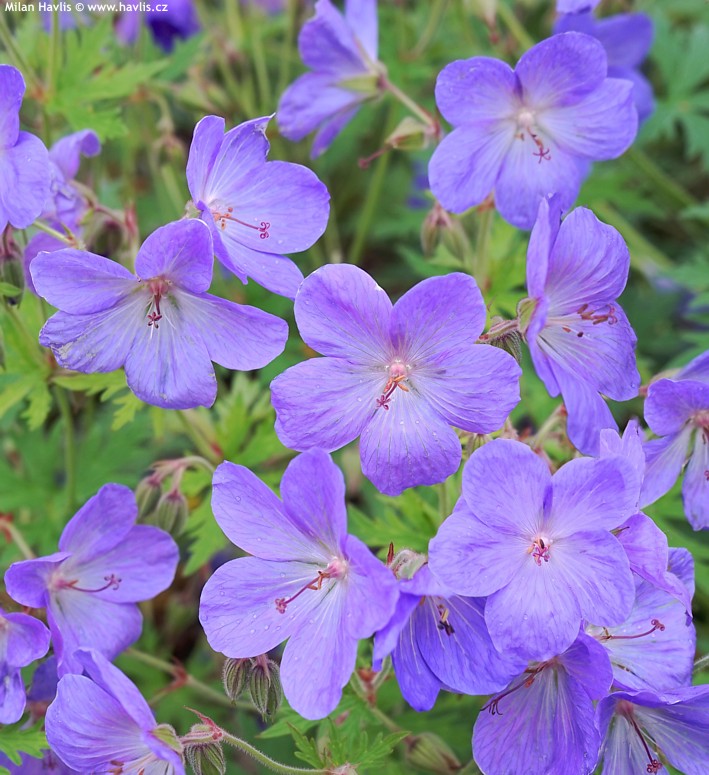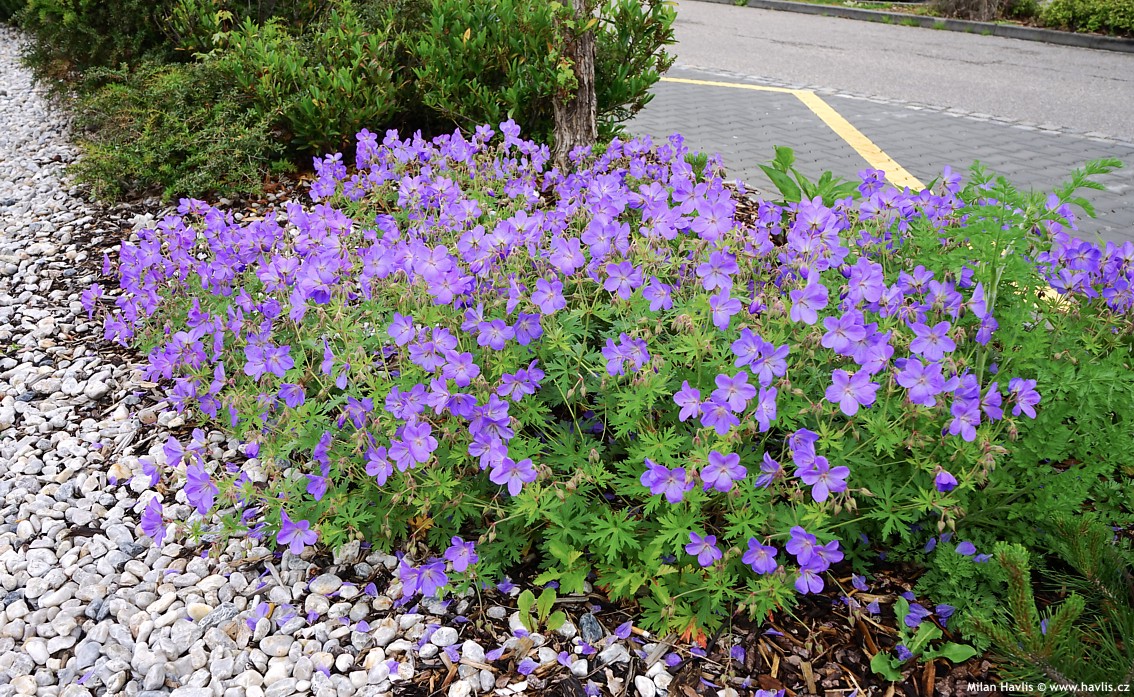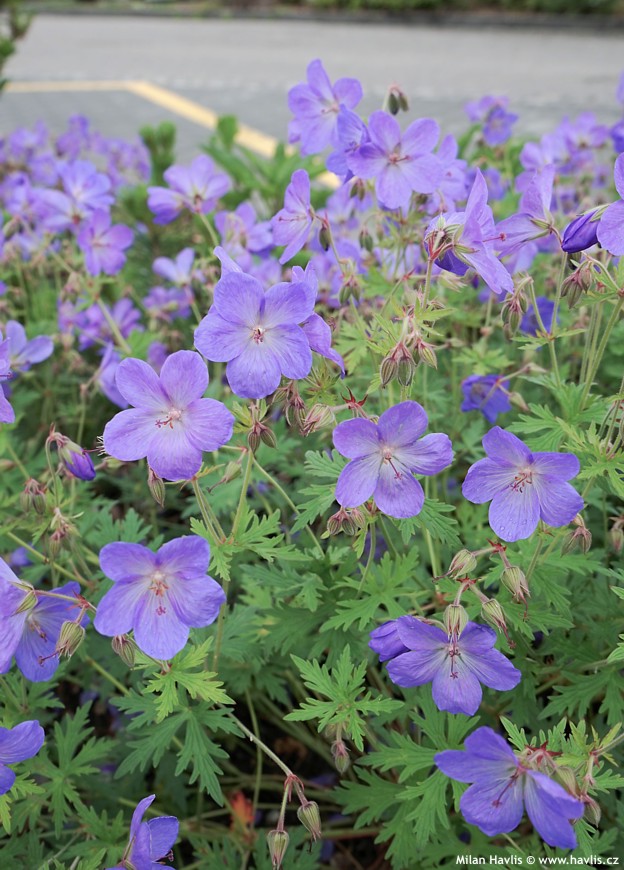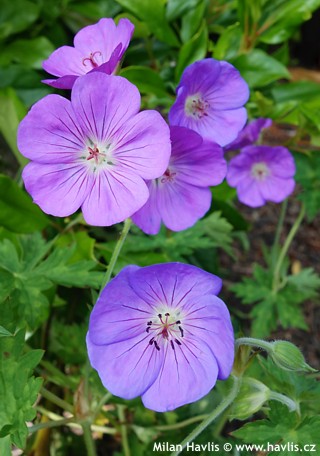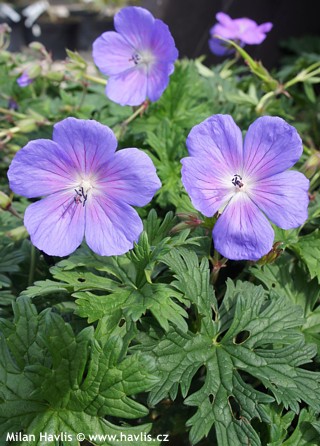Geranium himalayense Himalayan cranesbill
size/type
low or groundcovering,low perennial
usual height
0,1-0,2m
usual width
0,3-0,6m
leaves
deciduous broadleaf
colour of leaves
flowers
showy
colour of flowers
blooming time
May-July
location
full sun to shade
USDA zone (lowest)
3 (down to -40°C)
winter protection
for zone 5+6

for zone 7

categorized
Geranium
Cranesbill is a genus comprising of about 300 species. It is commonly used as a ground-covering perennial which can quickly form a respectable carpet. When in full bloom it offers a solid, one-colour show which in mass plantings looks stunning. Thanks to low growth it mostly finds its place under trees and shrubs, as well as in mixed borders along with other perennials.Description of the plant:
Himalayan cranesbill is perhaps one of the most common species cultivated in North and Central Europe. It is ground-covering, reliable, fast growing, and very hardy. Its alternative name is g.grandiflorum = large flowered which is also why it is often chosen for breeding of new, large flowered hybrids with rich colours. This one produces pastel lilac-violet flowers that are 4-6 cm across, saucer-shaped, open wide, and come out from late May until early July. Then they may sporadically bloom throughout summer, or you can cut back the whole turf after the main flowering, and expect a second flush of new flowers in early autumn. Himalayan cranesbill is a low growing species with very handsome, widely palmate, Japanese-maple-like, sharply lobed, basal leaves with prominent veins. They are mid green in spring and summer, turning brilliant purple red in autumn.Cranesbills will grow in most, moderately fertile, garden soil types except too heavy or water-logged, and Himalayan cranesbill grows well in both sun and shade. It is hardier than most other species - to about -40°C (USDA zone 3).
Last update 20-12-2019
QUICK PRICE OVERVIEW
CURRENTLY SOLD OUT












